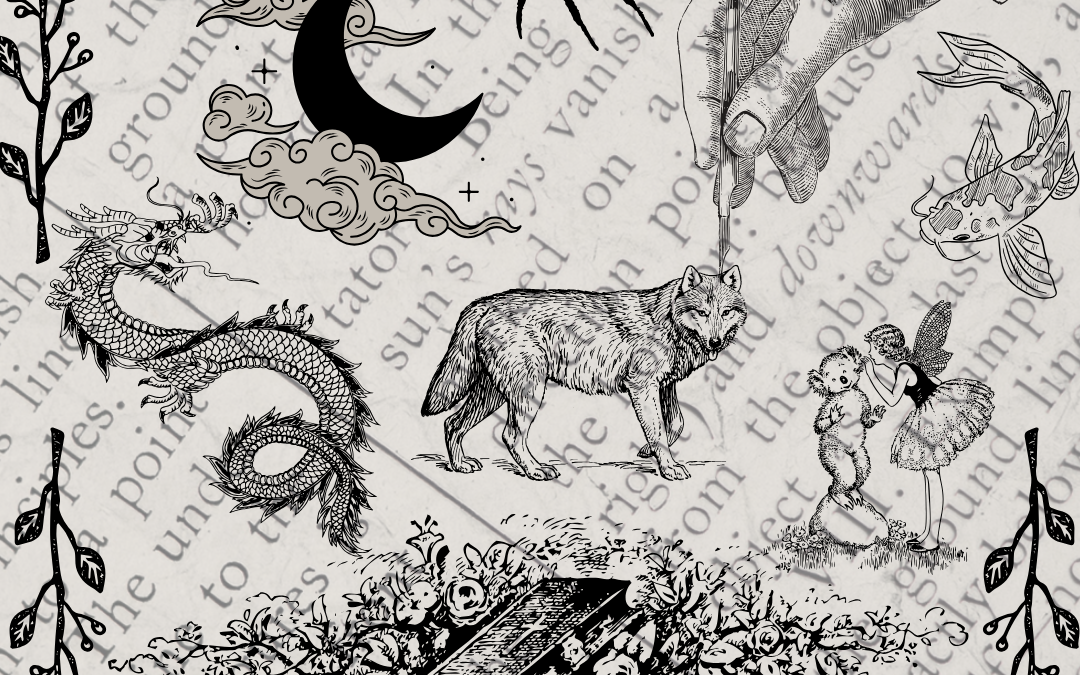Growing up, I am pretty sure many people have heard folklore and fairytale stories. Stories are one of the oldest forms of entertainment in the world. Pieces like Cinderella, Little Red Riding Hood, and The Three Little Pigs are all so well known that half the world has been exposed to their existence. Even if these stories may sound childish and much too fictional for older people, it would be a lie to say they were never a part of your life whether you liked it or not. I would like you to think about these questions: Do you remember what the first folklore or fairy tale story you ever heard was? How did you come to learn about it? What did you think about it then and how do you think about it now? After you are done thinking about these questions, let’s do some exercises with these old stories.
I would like to introduce to you a four-step prompt activity. When doing this activity, please keep away from electronics as much as possible and try to immerse yourself in your creative writer mode. Follow along and have fun!
1. Make a list of as many folklore stories that you have heard up until now. Take around one minute to make up the list.
For example: Cinderella, Goldilocks and the Three Bears, or The Three Little Pigs
2. Now that you have the list, circle three out from the list that you like or are more drawn to. Write a summary from beginning to end, for all three stories you chose.
For example: A story about a young girl who was abused by her stepmother and step-sisters growing up. Her kindness eventually wins her a ticket to happiness when she is chosen by the prince to become his princess and they marry happily ever after.
3. After you are done with the second step, look over them again. As you are looking over them, make a list of things that you could twist in each story.
A twist doesn’t have to be anything too big. It could be something about certain characters readers have never thought about or writing the story from the point of view of a character other than the main character. Or maybe you want to change the structure and/or form of the story. Give yourself three minutes for each story.
4. When you are finished, look over the three pieces and choose your favorite.
Take that piece and expand on it. Give yourself ten minutes. If you find yourself wanting to write more, you are more than welcome to continue.
Folklore stories and fairytales were a big part of my childhood and I believe for many other people’s childhood as well. But as experience builds up with age, you realize that not everything is as it seems. As a child, I used to believe that Cinderella was truly a pitiful character who finally received the happily ever after that she deserved. But as I grew older and saw more in life, I began to wonder about the behind-the-scenes. As a reader, you only see what the writer wants you to see. It is possible that their love at-first-sight did not last, or that Cinderella’s step-family wasn’t as bad as they were made out to be. To this day, I continue to think that there is more to the story than what the writer lets you see and this has generated many great ideas and stories.
Even though it may seem cliche, old school, or childish, sometimes doing something simple like this can lead to other great stories and ideas as well. So I hope you decide to keep the list of fairytale stories you made and revisit them like you did today one other day.
Meet the blogger:
 KASHIA YANG is a senior at Hamline University with a major in English with a concentration in creative writing. She is a writer in progress who aims to one day finally give her stories a fitting beginning, middle, and end. When she isn’t working, she reverts into a bed potato, enjoying movies, TV shows, fiction stories, knitting, and writing story ideas.
KASHIA YANG is a senior at Hamline University with a major in English with a concentration in creative writing. She is a writer in progress who aims to one day finally give her stories a fitting beginning, middle, and end. When she isn’t working, she reverts into a bed potato, enjoying movies, TV shows, fiction stories, knitting, and writing story ideas.


